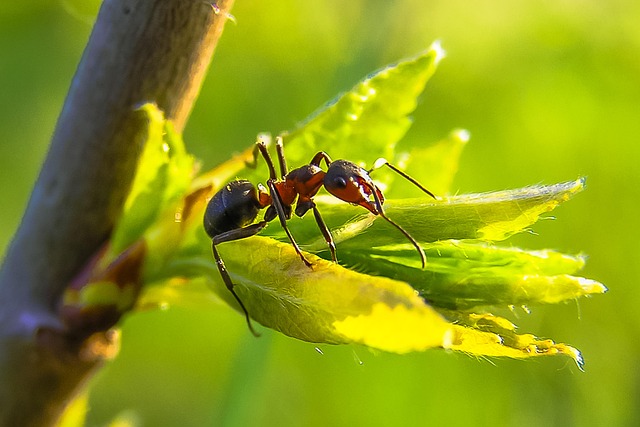Ant infestations are common global issues with over 12,000 species. Effective pest control for ants involves understanding ant behaviors and types. Professional extermination services specialize in identifying species, employing eco-friendly methods, targeting entry points, nests, and food sources. Pre-treatment preparation includes sealing entry points and removing food sources. Post-treatment care involves cleaning, sealing gaps, and following professional recommendations. Preventative measures like cleanliness and sealing entry points significantly reduce the need for extensive pest control for ants. DIY methods often ineffective; professional services use advanced techniques to eliminate colonies.
Ant infestations can be a persistent and frustrating problem, but understanding these common pests is the first step to effective control. From identifying different ant species to recognizing their unique behaviors, this guide equips homeowners with valuable insights. We explore why professional ant extermination services are crucial in eradicating these intruders, delving into modern treatment methods, and providing post-treatment care tips for lasting results. Learn how to prepare for an expert visit, prevent future infestations, and dispel common misconceptions about ant control, ensuring a pest-free home with our comprehensive approach to pest control for ants.
Understanding Ant Infestations: Common Types and Behaviors
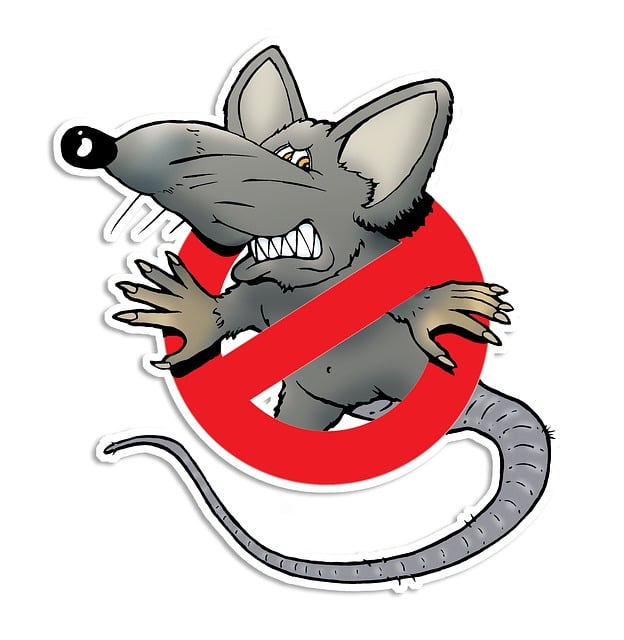
Ant infestations can be a common household nuisance, but understanding their behaviors and types is crucial when considering pest control for ants. There are over 12,000 known ant species worldwide, but the ones most commonly encountered in homes include carpet ants, odonthants, and fire ants. Each species has unique characteristics and nesting habits that influence how they invade and interact with their environment.
Carpet ants, for instance, prefer moist environments and are often found near water sources or in humid areas like basements. Odonthants, known for their preference to feed on sweet substances, are more likely to infest kitchens and food storage areas. Fire ants, on the other hand, build large nests and can be aggressive when disturbed, making them a significant concern for homeowners. Recognizing these behaviors is key to determining the most effective pest control methods for each specific ant invasion.
The Importance of Professional Ant Extermination Services
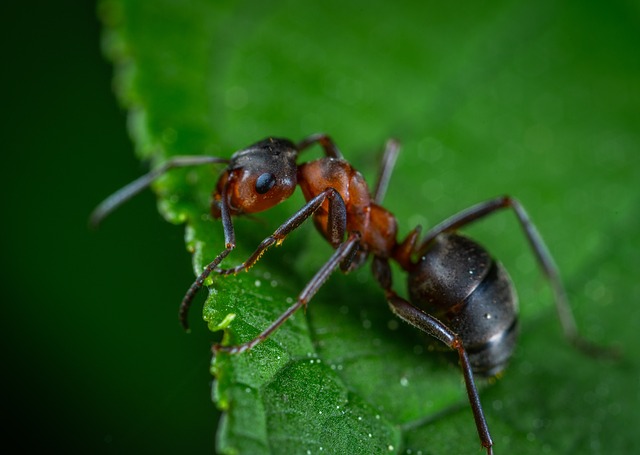
Ants can quickly turn from a minor nuisance into a major infestation, causing damage to homes and structures as they forage for food and establish nests. While there are DIY methods for ant control, professional ant extermination services offer several significant advantages. These experts have in-depth knowledge of various ant species, their behaviors, and the most effective treatments. They utilize specialized equipment and eco-friendly pest control for ants, ensuring minimal environmental impact while eliminating ant colonies efficiently.
Professional exterminators also provide tailored solutions based on thorough inspections and assessments. They can identify entry points, nest locations, and food sources, addressing the root causes of an infestation. Moreover, these services often come with ongoing support and prevention strategies to keep ants at bay in the long term, providing peace of mind for homeowners.
Effective Methods Used in Ant Control and Elimination

In the realm of ant extermination services, professionals employ a variety of effective methods to ensure successful ant control and elimination. One key approach is identifying the specific species of ants infesting an area, as different species require distinct strategies. Once identified, pest control for ants often involves targeted treatments using modern insecticides designed to disrupt their pheromone trails and eliminate colonies. These chemicals are applied with precision to minimize environmental impact and ensure safety for both humans and pets.
Beyond chemical interventions, non-chemical methods such as sanitation, sealing entry points, and removing food sources play a crucial role in ant control. Professionals also utilize baits strategically placed to attract and trap ants, preventing their return. These baits contain slow-acting toxins that eliminate ants without harming other insects or the environment. By combining these effective methods, pest control for ants offers comprehensive solutions tailored to each unique situation, ensuring long-lasting results.
Preparation for an Ant Exterminator Visit: What to Expect
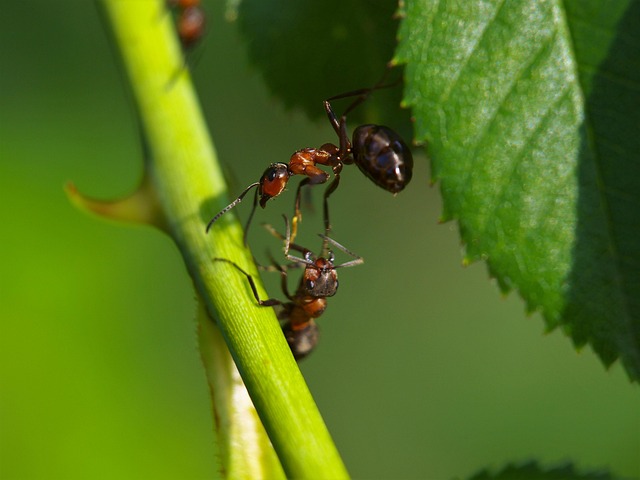
Before an ant exterminator arrives, it’s helpful to understand what to expect during the preparation phase. First, identify and seal any entry points leading into your home or building, as this can prevent further ant infestations. Check for areas where ants may be nesting, such as cracks in walls, floors, or around windowsills, and fill these gaps with caulk or sealant. Remove accessible food sources, including pet food, spilled drinks, and open garbage cans, to minimize attractants. Ensure good hygiene practices by regularly cleaning surfaces and sweeping floors.
On the day of the visit, keep children and pets away from the treatment area to ensure their safety during the pest control for ants process. Remove any indoor plants temporarily as they may interfere with the application of treatments. Be prepared to provide detailed information about when ant activity was first noticed, where it is most prevalent, and any recent changes in the infestation’s behavior or extent. Following the exterminator’s recommendations for post-treatment care will also help prevent future ant infestations.
Post-Treatment Care: Ensuring Long-Lasting Results
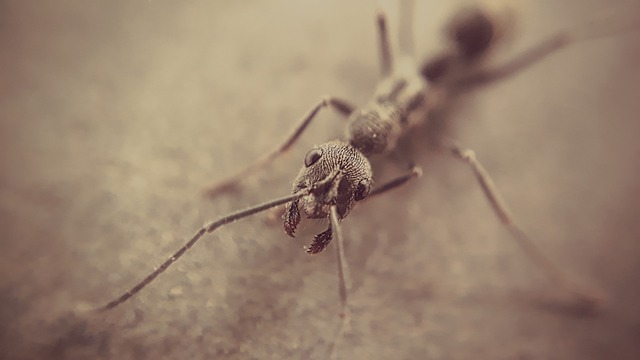
After an ant extermination treatment, proper post-care is essential to ensure the results are long-lasting and effective. This includes maintaining a clean environment, as ants are attracted to food sources. Regularly cleaning surfaces, mopping floors, and wiping down countertops can help prevent any remaining ants from establishing new colonies. Additionally, sealing entry points such as cracks and gaps in walls or windowsills is crucial to stop future infestations.
Pest control for ants often involves applying specialized treatments that require specific care post-application. Following the advice of professional exterminators is vital; they may recommend avoiding certain areas until the treatment has fully taken effect, and suggest ongoing preventive measures to keep ants at bay. This proactive approach ensures a peaceful home, free from unwanted insect visitors, and provides lasting relief from ant infestations.
Preventive Measures: Tips for Keeping Ants Away
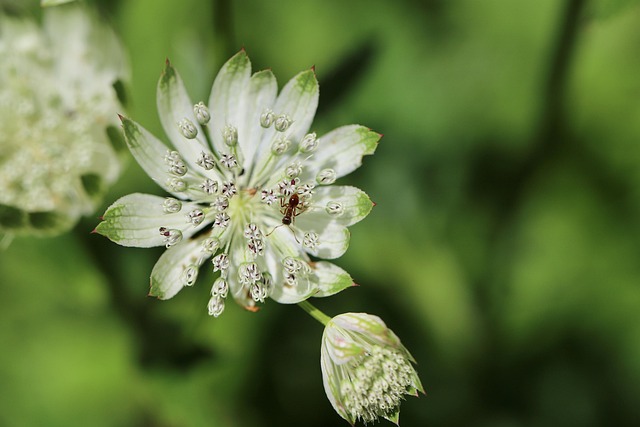
Ants can quickly turn into a bustling invasion, but there are preventative measures you can take to keep them at bay. Effective pest control for ants begins with maintaining cleanliness and sealing entry points. Regularly clean your home, wiping down surfaces and sweeping floors to remove any crumbs or spills that might attract ants. Additionally, inspect your home for cracks or gaps in walls, windowsills, or doors, and seal these entries with caulk or weatherstripping.
Outside your home, trim back foliage and branches that come into contact with your house, eliminating potential routes for ants to enter. Store food in airtight containers and dispose of garbage promptly. By implementing these simple tips, you can significantly deter ants from setting up shop in your home, reducing the need for extensive pest control for ants down the line.
Common Misconceptions About Ant Extermination and Their Debunking

Many people hold onto several misconceptions about ant extermination, often due to misinformation or outdated methods. One common myth is that DIY solutions are as effective as professional pest control for ants. While some over-the-counter products may provide temporary relief, they often fail to address the queen and her colony, leading to a persistent infestation. Professional services employ advanced techniques, such as targeted applications of insecticides, baits, and even heat treatments, ensuring complete eradication.
Another misconception is that ants are easily identifiable and visible throughout their entire lifecycle. In reality, most ant species have intricate life cycles, with eggs, larvae, and pupae stages often hidden away in nests underground or within structures. Only the adult ants are typically seen, which can lead to a false sense of understanding about the extent of an infestation. Recognizing the subtle signs of an ant problem, like worker ants searching for food or distinct trails, is crucial. Engaging pest control services equipped with the right tools and knowledge helps address these issues effectively.
